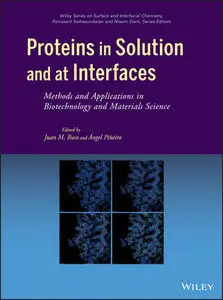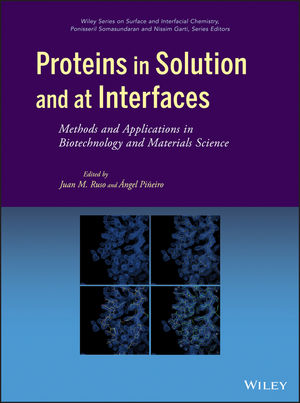Proteins in Solution and at Interfaces: Methods and Applications in Biotechnology and Materials Science by Juan M. Ruso and Angel Pineiro
English | 2013 | ISBN: 0470952512 | 508 pages | PDF | 11,7 MB
English | 2013 | ISBN: 0470952512 | 508 pages | PDF | 11,7 MB
Explores new applications emerging from our latest understanding of proteins in solution and at interfaces
Proteins in solution and at interfaces increasingly serve as the starting point for exciting new applications, from biomimetic materials to nanoparticle patterning. This book surveys the state of the science in the field, offering investigators a current understanding of the characteristics of proteins in solution and at interfaces as well as the techniques used to study these characteristics. Moreover, the authors explore many of the new and emerging applications that have resulted from the most recent studies. Topics include protein and protein aggregate structure; computational and experimental techniques to study protein structure, aggregation, and adsorption; proteins in non-standard conditions; and applications in biotechnology.
Proteins in Solution and at Interfaces is divided into two parts:
• Part One introduces concepts as well as theoretical and experimental techniques that are used to study protein systems, including X-ray crystallography, nuclear magnetic resonance, small angle scattering, and spectroscopic methods
• Part Two examines current and emerging applications, including nanomaterials, natural fibrous proteins, and biomolecular thermodynamics
The book's twenty-three chapters have been contributed by leading experts in the field. These contributions are based on a thorough review of the latest peer-reviewed findings as well as the authors' own research experience. Chapters begin with a discussion of core concepts and then gradually build in complexity, concluding with a forecast of future developments.
Readers will not only gain a current understanding of proteins in solution and at interfaces, but also will discover how theoretical and technical developments in the field can be translated into new applications in material design, genetic engineering, personalized medicine, drug delivery, biosensors, and biotechnology.



